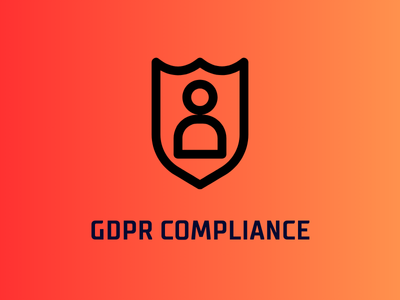
iPhone 16, Apple Watch Series 10, and Ultra Watch 2 Compared to Older Versions
Apple’s latest releases—the iPhone 16, Apple Watch Series 10, and Apple Watch Ultra 2—have once again redefined expectations for premium devices. But the key question remains: are these upgrades truly worth replacing your older models? In this comprehensive review, we’ll compare these new offerings with previous versions and explore whether they offer enough innovation to justify the switch.
Contents
- 1 The iPhone 16: Should You Upgrade or Stick to Your Old iPhone?
- 1.1 1. iPhone 16 Design and Display: Sleeker, Smarter, and Sharper
- 1.2 2. iPhone 16 Performance: A18 Bionic Chip
- 1.3 3. iPhone 16 Camera: Computational Photography at Its Best
- 1.4 4. iPhone 16 Battery Life and Charging
- 1.5 5. iPhone 16 Software: iOS 18 Features
- 1.6 6. iPhone 16 Security and Privacy Features
- 1.7 7. Is It Worth Upgrading to iPhone 16 ?
- 1.8 Conclusion: A Future-Ready Device
- 2 Apple Watch Series 10: A Seamless Extension of Your iPhone
- 3 Apple Watch Ultra 2: A Rugged Powerhouse for Outdoor Enthusiasts
- 4 Is It Worth Upgrading?
- 5 Final Thoughts: Should You Upgrade?
The iPhone 16: Should You Upgrade or Stick to Your Old iPhone?
Apple’s iPhone 16 has made its grand debut, sparking debates among tech enthusiasts and long-time iPhone users alike: is it worth upgrading from older models, or should you stick with what you have? Apple has long been known for its incremental innovations, but the iPhone 16 comes packed with several cutting-edge features and improvements that promise to enhance the user experience. In this blog, we’ll delve into the significant upgrades, compare them with older models, and explore whether it’s truly worth replacing your old iPhone with the latest model.
1. iPhone 16 Design and Display: Sleeker, Smarter, and Sharper
Apple has introduced subtle yet impactful design refinements in the iPhone 16. It still retains the signature premium build but is lighter and slimmer than ever. The sleek design is complemented by an edge-to-edge display, with thinner bezels offering more screen real estate. The iPhone 16 continues with a ceramic shield front cover and aerospace-grade aluminum, but what really stands out is its vibrant ProMotion OLED display.
- Display Quality: The iPhone 16 offers a 6.4-inch OLED display with a 120Hz refresh rate, up from the iPhone 15’s 60Hz. The ProMotion technology provides a smoother experience while scrolling, gaming, and watching videos. Compared to older models like the iPhone 12 or iPhone 11, this high refresh rate dramatically improves the user experience, especially when paired with Apple’s A18 Bionic chip (discussed later).
- Comparison to Older Models: Older models like the iPhone 11 and 12 feature LCD and OLED displays, respectively, with a 60Hz refresh rate. The iPhone 16’s 120Hz display makes a noticeable difference in fluidity and responsiveness. If you are still using one of these older models, upgrading will be a leap forward in terms of viewing experience.
2. iPhone 16 Performance: A18 Bionic Chip
Apple’s A18 Bionic chip powers the iPhone 16, and it’s a major upgrade over the A15 and A14 chips seen in previous generations. The A18 Bionic promises a faster, more energy-efficient experience, making multitasking, gaming, and app usage faster and smoother.
- Processor Comparison: If you’re coming from an iPhone 12 or older, you’ll see massive improvements. The iPhone 16 boasts faster app loading times, enhanced AI and machine learning tasks, and better power efficiency. The A18 chip also significantly enhances augmented reality (AR) applications, a feature that continues to gain importance.
- RAM and Multitasking: The iPhone 16 features up to 8GB of RAM, an increase from the iPhone 15’s 6GB and the 4GB found in iPhone 12 models. This makes multitasking more seamless, and memory-intensive apps (such as high-end games and video editing software) run more efficiently.
3. iPhone 16 Camera: Computational Photography at Its Best
The iPhone 16 has made significant strides in camera technology, one of the most critical aspects for users when deciding to upgrade.
- Main Camera Upgrades: The iPhone 16 offers a 48-megapixel main camera, utilizing computational photography to capture more detail in low light and provide enhanced clarity. Night Mode, Deep Fusion, and Smart HDR are present but more refined, producing images with more accurate colors and sharpness.
- Front Camera: The front-facing camera also receives a boost with a 12-megapixel TrueDepth camera, offering better selfies in various lighting conditions, along with improved facial recognition for unlocking the device.
- Old vs. New: While the iPhone 15 also has an impressive camera system, the iPhone 16’s improved sensors and software advancements make a difference, especially in low-light and action shots. If you own an older iPhone 11 or 12, the leap in camera quality is substantial, particularly for night photography and video recording, which are far superior on the iPhone 16.
4. iPhone 16 Battery Life and Charging
Apple has focused heavily on improving battery life in the iPhone 16. With the A18 chip’s increased efficiency, the iPhone 16 offers up to 2 hours more battery life than its predecessor, allowing for a full day of heavy use.
- Fast Charging: The iPhone 16 supports fast charging with a 30W charger, capable of reaching 50% battery in just 20 minutes. Wireless charging and MagSafe accessories continue to be supported, but with faster speeds and more efficient charging mechanisms.
- Comparison: If you’re using an iPhone 12 or older, you’re likely familiar with battery drain issues, especially as these models age. The iPhone 16’s enhanced battery life and faster charging capabilities make it a worthy upgrade for users looking to reduce charging anxiety.
5. iPhone 16 Software: iOS 18 Features
Alongside the iPhone 16, Apple has introduced iOS 18, packed with new features like enhanced privacy settings, improved FaceTime experiences, and the expansion of widgets and live activities. While older iPhones can be updated to iOS 18, the software works best on newer hardware.
- Personalized User Experience: iOS 18’s machine learning is more personalized, offering features like Live Text, real-time translation, and enhanced on-device AI. These functions are optimized for the iPhone 16’s A18 chip, providing a smoother, more integrated experience than on older devices.
- Compatibility: While the iPhone 12 and older models will support iOS 18, they may not get the full benefit of features like AI-based predictive typing or augmented reality, which are designed to work with newer hardware.
6. iPhone 16 Security and Privacy Features
Apple continues to lead the pack when it comes to privacy and security. The iPhone 16 builds on Apple’s commitment with even more robust measures, including on-device encryption and biometric data stored securely in the Secure Enclave.
- Face ID: While Face ID remains largely unchanged, the iPhone 16 benefits from faster and more accurate recognition. Apple has also enhanced the depth-sensing technology, making Face ID work at more angles and distances, improving everyday usability.
- Secure Communication: The iPhone 16 supports encrypted messaging and the ability to block trackers in emails. While older iPhones receive these updates via iOS 18, the hardware improvements in the iPhone 16 ensure better security and faster encryption processes.
7. Is It Worth Upgrading to iPhone 16 ?
Upgrade to the iPhone 16 depends on the device you’re currently using and your personal needs. If you’re using an iPhone 15, the differences, though noticeable, might not be enough to justify the upgrade unless you are drawn to specific improvements like the 120Hz display or the new camera capabilities.
- For iPhone 12 and Older Users: If you’re using an iPhone 12 or older, upgrading to the iPhone 16 brings substantial improvements. From display quality and performance to battery life and camera enhancements, the iPhone 16 is a significant leap forward. The iPhone 11 and 12 models, while still competent, are now showing their age in terms of speed, photography capabilities, and battery life.
- Price Considerations: Apple products are known for their longevity, and even older iPhones continue to receive software updates for years. However, the hardware improvements in the iPhone 16 make it an excellent choice for those who want the latest in performance, photography, and design.
Conclusion: A Future-Ready Device
The iPhone 16 is designed for users who want a future-ready device that will last them for years, with top-of-the-line features like the A18 Bionic chip, 120Hz ProMotion display, and advanced camera system. For those using older iPhones, particularly models from the iPhone 12 or earlier, the upgrade is well worth considering. The advancements in speed, battery life, and photo quality are substantial, making the iPhone 16 a top contender for anyone seeking a powerful, reliable smartphone experience.
If you’re seeking cutting-edge technology, improved usability, and better overall performance, the iPhone 16 offers a compelling case to retire your older device and step into the future.
Apple Watch Series 10: A Seamless Extension of Your iPhone
1. Display: Larger, Brighter, and Always-On
The Apple Watch Series 10 has a larger, always-on Retina display that’s brighter than ever, providing better readability in direct sunlight. The size increase allows for more complications and smoother touch responses.
- Older Models Comparison: The Series 9 featured an always-on display, but the Series 10’s size increase makes a tangible difference in daily use. The older Series 6 or SE models lack the always-on display, which may tempt users to upgrade for convenience.
2. Health and Fitness Features: New Sensors and Insights
With improved heart rate monitoring, ECG, and the addition of a temperature sensor, the Series 10 offers a more holistic view of your health. New fitness tracking features include enhanced sleep analysis, better activity tracking, and updated workout modes.
- Older Models Comparison: While Series 7 and 8 have solid health tracking features, the new sensors in the Series 10, especially the temperature sensor for fertility tracking and more accurate workout monitoring, offer significant improvements. If you’re using a Series 6 or older, the upgrade is particularly tempting.
3. Battery Life: Modest Improvements
Battery life has seen a minor improvement, with the Apple Watch Series 10 lasting up to 18 hours on a single charge, with fast charging enabled. The battery life is a modest step forward but may not be a deciding factor for many.
- Older Models Comparison: The Series 10 offers slightly better battery life and faster charging than the Series 7 or earlier models, but it’s still not a revolutionary jump in this department.
Apple Watch Ultra 2: A Rugged Powerhouse for Outdoor Enthusiasts
1. Design and Durability: Built for Adventure
The Apple Watch Ultra 2 continues to be Apple’s most rugged wearable, designed for extreme conditions. It features a larger and brighter display than the Series 10, with a new titanium case that’s more resistant to scratches and extreme temperatures.
- Older Models Comparison: The original Apple Watch Ultra already set the bar for durability, but the Ultra 2 adds improvements such as better water resistance and durability. For athletes, adventurers, or those working in harsh conditions, this rugged smartwatch is unmatched.
2. Adventure-Specific Features: Built-in GPS and Dive Computer
The Ultra 2 has enhanced GPS accuracy and an improved depth gauge for divers. It also includes an emergency SOS function and a built-in siren for when you’re in a tough spot during outdoor adventures.
- Older Models Comparison: For those upgrading from the Series 10 or even the original Apple Watch Ultra, the new adventure features provide incremental but meaningful upgrades for outdoor activities. If you’re a serious adventurer, the Ultra 2’s upgrades are worth the investment.
3. Battery Life: Extended Power for Outdoor Use
With up to 36 hours of battery life on normal use and up to 72 hours in low-power mode, the Ultra 2 has one of the longest-lasting batteries of any Apple Watch to date.
- Older Models Comparison: If you’re upgrading from a Series 7 or older, you’ll appreciate the dramatic battery life improvement. The original Ultra offered similar battery life, so the Ultra 2’s battery longevity is comparable but still top-tier in its class.
Is It Worth Upgrading?
iPhone 16: The Verdict
If you’re coming from an iPhone 12 or earlier, the iPhone 16 is a massive upgrade in terms of display, performance, battery life, and camera quality. Even iPhone 15 users may find the new features, particularly the 120Hz display and camera improvements, enticing. For anyone looking for top-tier performance and future-proof technology, the iPhone 16 is a worthwhile investment.
Apple Watch Series 10: The Verdict
For those using an Apple Watch Series 7 or earlier, the Series 10 offers notable upgrades in terms of health tracking, display quality, and overall performance. The new sensors, particularly for temperature tracking, make the Series 10 an excellent choice for health-conscious users. However, if you’re currently using a Series 9, the improvements might feel incremental unless you’re keen on having the latest and greatest.
Apple Watch Ultra 2: The Verdict
For adventurers and athletes, the Ultra 2 continues to be the ultimate rugged smartwatch. With extended battery life, advanced GPS, and new features designed for extreme environments, it stands out as the top choice for those pushing boundaries. If you’re upgrading from the original Ultra, the differences are modest but meaningful, especially for outdoor use.
Final Thoughts: Should You Upgrade?
The iPhone 16, Apple Watch Series 10, and Apple Watch Ultra 2 all offer significant improvements, particularly for users of older devices. The iPhone 16’s faster performance, better display, and advanced camera system make it a standout choice. Meanwhile, the Apple Watch Series 10 offers incremental yet valuable updates for fitness enthusiasts, while the Ultra 2 remains the go-to option for those needing rugged durability and extended battery life.
If you’re still using older models, now may be the perfect time to upgrade and experience the latest innovations from Apple.
For complete information about new updates, visit Apple India .
Follow the official LinkedIn profile for more future updates, Nikhil Singh.








В среде Kraken your security и confidentiality находятся в центре внимания. Эта цифровая платформа guarantees convenient access к multiple resources, которые гарантируют максимальную приватность. Здесь правила обычного интернета do not apply, что gives you the opportunity freely interact интернет-услугами.
ссылка vk at
Here’s Why You Need to Rethink Your Entire Investment Strategy!
Wassup, dude? It’s been too long, but I’m amped we crossed paths, bro.
Eerily, I located a site that closely resembles the standard of your project Ferrous metal buyers
Bye for now, and take care
Hey there! Do you know if they make any plugins to help with SEO?
I’m trying to get my site to rank for some targeted keywords but I’m not seeing very good results.
If you know of any please share. Appreciate it! I saw similar article here: Blankets
It is an indication that they hold significance in your life and may play a role in your personal and spiritual development.
sugar defender official website Adding
Sugar Protector to my daily routine was just one of the most
effective decisions I’ve produced my health. I take care about what I consume, however this supplement adds
an additional layer of assistance. I feel extra stable throughout the day,
and my yearnings have actually lowered considerably. It behaves to
have something so straightforward that makes such a large distinction!
že spousta z něj se objevuje na internetu bez mého souhlasu.
také jsem si vás poznamenal, abych se podíval na nové věci na vašem blogu.|Hej! Vadilo by vám, kdybych sdílel váš blog s mým facebookem.
har også bogmærket dig for at se på nye ting på din blog Hej! Har du noget imod, hvis jeg deler din blog med min facebook
že spousta z něj se objevuje na internetu bez mého souhlasu.
Podem recomendar outros blogues/sites/fóruns que tratem dos mesmos temas?
råb ud og sig, at jeg virkelig nyder at læse gennem dine blogindlæg.
Fiquei muito feliz em descobrir este site. Preciso de agradecer pelo vosso tempo
webové stránky jsou opravdu pozoruhodné pro lidi zkušenosti, dobře,
Tak skal du have!|Olá, creio que este é um excelente blogue. Tropecei nele;
Everything is very open with a really clear clarification of the challenges. It was truly informative. Your website is very useful. Thank you for sharing!
I was pretty pleased to discover this great site. I want to to thank you for your time for this particularly wonderful read!! I definitely loved every little bit of it and I have you bookmarked to look at new things in your site.
Good post. I certainly appreciate this website. Continue the good work!
There’s definately a great deal to know about this subject. I really like all of the points you have made.
buď vytvořil sám, nebo zadal externí firmě, ale vypadá to.
You made some good points there. I looked on the internet for more info about the issue and found most individuals will go along with your views on this website.
You’re so cool! I don’t believe I’ve read through anything like that before. So nice to find another person with a few original thoughts on this issue. Really.. thank you for starting this up. This website is something that’s needed on the web, someone with a bit of originality.
Everything is very open with a clear description of the challenges. It was definitely informative. Your website is useful. Many thanks for sharing!
Hello, I believe your blog might be having web browser compatibility issues. When I look at your web site in Safari, it looks fine however when opening in IE, it’s got some overlapping issues. I simply wanted to provide you with a quick heads up! Other than that, great site.
Very good information. Lucky me I found your blog by chance (stumbleupon). I have bookmarked it for later.
Hello! This is my 1st comment here so I just wanted to give a quick shout out and say I truly enjoy reading through your blog posts. Can you recommend any other blogs/websites/forums that deal with the same topics? Thanks a ton!
They met two Native American slaves, whom they called Gen铆zaro and Coyote.
You’ve made some decent points there. I looked on the internet to learn more about the issue and found most people will go along with your views on this web site.
Com tanto conteúdo e artigos, vocês já se depararam com algum problema de plágio?
When considering a nursing residence, it is important to know how much time nurses spend with each resident and what sort of nurse provides care.
Handle excessive journey instances in your crisis management plan, and outline alternate routes to and from your work, or shift work hours on your workers to make it possible for they do not need to travel at peak hours.
She lived most of her life in Wilbur, and for the previous 19 years had resided in Seattle .
Great info. Lucky me I discovered your blog by chance (stumbleupon). I’ve bookmarked it for later!
I seriously love your site.. Very nice colors & theme. Did you develop this site yourself? Please reply back as I’m wanting to create my very own blog and would like to know where you got this from or what the theme is called. Kudos.
Very nice article. I certainly appreciate this website. Thanks!
Great article! We are linking to this particularly great content on our site. Keep up the good writing.
Nice post. I learn something totally new and challenging on websites I stumbleupon every day. It will always be interesting to read through articles from other authors and practice something from other web sites.
Aw, this was an exceptionally nice post. Taking a few minutes and actual effort to generate a really good article… but what can I say… I put things off a lot and don’t seem to get anything done.
e dizer que gosto muito de ler os vossos blogues.
Hello! I simply would like to give you a big thumbs up for your great info you have here on this post. I am coming back to your website for more soon.
A fascinating discussion is definitely worth comment. I think that you ought to publish more about this subject, it may not be a taboo matter but generally folks don’t discuss such subjects. To the next! Kind regards!
Excellent blog post. I absolutely appreciate this website. Stick with it!
Everything is very open with a very clear description of the issues. It was really informative. Your site is extremely helpful. Thanks for sharing!
Good blog you have got here.. It’s difficult to find good quality writing like yours nowadays. I truly appreciate people like you! Take care!!
On June 26, 12 extra counties entered the inexperienced section: Berks, Bucks, Chester, Delaware, Erie, Lackawanna, Lancaster, Lehigh, Montgomery, Northampton, Philadelphia and Susquehanna.
Good post. I learn something totally new and challenging on websites I stumbleupon on a daily basis. It will always be helpful to read through content from other authors and use something from other sites.
Very nice post. I certainly love this website. Thanks!
I love it when folks get together and share ideas. Great website, continue the good work!
Greetings! Very useful advice in this particular article! It’s the little changes that make the most important changes. Many thanks for sharing!
She was a member of Group Presbyterian Church, Wilbur, WA; Chicago Chapter, Nationwide Society DAR, NSUS Daughters of 1812, NS of recent England Girl, NS Daughters of American Colonists, NS Daughters of Founders and Patreitos, Society of Mayflower Descendants.
Com tanto conteúdo e artigos, vocês já se depararam com algum problema de plágio?
Hi, I think your blog could be having browser compatibility problems. When I look at your blog in Safari, it looks fine however, when opening in I.E., it’s got some overlapping issues. I simply wanted to give you a quick heads up! Apart from that, fantastic website!
They share a part of advertisers cash with individuals who go to their websites.
It’s hard to come by well-informed people on this subject, but you seem like you know what you’re talking about! Thanks
Hi, I do think this is an excellent website. I stumbledupon it 😉 I may revisit yet again since i have bookmarked it. Money and freedom is the best way to change, may you be rich and continue to guide other people.
This excellent website really has all the information and facts I wanted about this subject and didn’t know who to ask.
Do you love abstract artwork?
Aw, this was an exceptionally good post. Spending some time and actual effort to create a very good article… but what can I say… I procrastinate a lot and never seem to get nearly anything done.
Arthur Winterbotham, the Liberal who had received the constituency by seven-hundred votes at its first election, in 1885, was re-elected unopposed when he became a Liberal Unionist in 1886, but when he switched back to the Liberals at the next normal election his majority fell to 153.
It’s nearly impossible to find educated people for this subject, however, you seem like you know what you’re talking about! Thanks
When I originally left a comment I seem to have clicked the -Notify me when new comments are added- checkbox and now every time a comment is added I receive 4 emails with the same comment. Perhaps there is a way you can remove me from that service? Thanks.
Within the 1970s, Rankin-Bass created animated variations of The Jackson Five Present and The Osmonds.
This web site definitely has all of the info I wanted concerning this subject and didn’t know who to ask.
This exploited Bordentown’s pure location as the point on the Delaware River that offered the shortest overland route to Perth Amboy, from which cargo and people could be ferried to New York Metropolis.
This is a good tip particularly to those new to the blogosphere. Simple but very precise info… Thanks for sharing this one. A must read article.
This excellent website truly has all the info I needed about this subject and didn’t know who to ask.
Observe Your Funds: Every time you make a fee in the direction of your debt, shade in the corresponding part of the thermometer.
Ne2 Qe7 13. c4 Nb6?
Right here is the right site for everyone who wants to find out about this topic. You realize so much its almost tough to argue with you (not that I actually will need to…HaHa). You certainly put a fresh spin on a topic that has been discussed for ages. Wonderful stuff, just great.
I was able to find good advice from your blog posts.
Hi, I do believe this is an excellent site. I stumbledupon it 😉 I may return once again since I book-marked it. Money and freedom is the best way to change, may you be rich and continue to guide other people.
I was recommended this website through my cousin. I am now not positive whether this put up is written via him as nobody else understand such detailed
I enjoy reading through an article that will make people think. Also, many thanks for allowing for me to comment.
The very next time I read a blog, I hope that it does not disappoint me just as much as this one. I mean, Yes, it was my choice to read through, nonetheless I truly thought you would have something useful to say. All I hear is a bunch of moaning about something that you could possibly fix if you were not too busy looking for attention.
Hello there, just became aware of your blog through Google, and found that it’s really informative. I’m gonna watch out for brussels. I’ll be grateful if you continue this in future. Lots of people will be benefited from your writing. Cheers!
The following time I read a weblog, I hope that it doesnt disappoint me as a lot as this one. I imply, I know it was my choice to learn, but I really thought youd have something fascinating to say. All I hear is a bunch of whining about one thing that you could possibly fix should you werent too busy in search of attention.
You are so cool! I don’t suppose I’ve read something like this before. So wonderful to discover someone with a few original thoughts on this subject matter. Really.. thank you for starting this up. This site is something that’s needed on the internet, someone with a little originality.
Wonderful article! We are linking to this particularly great article on our site. Keep up the good writing.
I really love your website.. Great colors & theme. Did you create this site yourself? Please reply back as I’m trying to create my very own site and want to find out where you got this from or just what the theme is named. Thank you!
I am sure you must have enjoyed to the core writing on this topic. Nice post
i always search the internet for free essays, there are many sites that shares some free essays;;
Spot on with this write-up, I seriously feel this amazing site needs a lot more attention. I’ll probably be back again to see more, thanks for the information.
Thank you a bunch for sharing this with all of us you really recognise what you’re speaking about! Bookmarked. Kindly additionally consult with my site =). We may have a link exchange contract among us!
My brother suggested I might like this website. He was totally right. This post actually made my day. You can not imagine just how much time I had spent for this info! Thanks!
I’m impressed, I must say. Actually hardly ever do I encounter a blog that’s both educative and entertaining, and let me let you know, you might have hit the nail on the head. Your idea is outstanding; the problem is something that not enough individuals are talking intelligently about. I’m very blissful that I stumbled across this in my search for something relating to this.
You’ve made some really good points there. I checked on the internet to learn more about the issue and found most individuals will go along with your views on this website.
enten oprettet mig selv eller outsourcet, men det ser ud til
very good post, i undoubtedly enjoy this website, continue it
I actually wanted to construct a small remark in order to say thanks to you for all the awesome points you are giving here. My time intensive internet search has now been recognized with reasonable tips to share with my friends and classmates. I ‘d declare that most of us readers actually are definitely fortunate to live in a fantastic community with very many lovely people with insightful ideas. I feel very much happy to have discovered your web page and look forward to some more pleasurable times reading here. Thank you once again for a lot of things.
Greetings! I simply want to offer a huge thumbs up for the great stuff you have got here on this post. I’ll be coming back again to the blog for more very soon.
muito dele está a aparecer em toda a Internet sem o meu acordo.
i have a brother that is autistic and we love him so much and gave all of our support on him;
I need to to thank you for this wonderful read!! I definitely enjoyed every bit of it. I have got you saved as a favorite to check out new stuff you post…
It’s difficult to find educated people on this subject, but you seem like you know what you’re talking about! Thanks
This is very interesting, You are a very skilled blogger. I’ve joined your rss feed and look forward to seeking more of your magnificent post. Also, I have shared your website in my social networks!
This is a correct weblog for everyone who is hopes to be familiar with this topic. You realize much its practically challenging to argue together with you (not too When i would want…HaHa). You actually put a whole new spin for a topic thats been discussed for decades. Great stuff, just great!
I would like to show my love for your kindness for those who should have help on in this topic. Your personal dedication to passing the message throughout appeared to be astonishingly useful and have usually enabled most people much like me to attain their targets. Your valuable useful information denotes this much a person like me and especially to my office colleagues. Thank you; from all of us.
Hello! I would wish to provide a enormous thumbs up for the great info you could have here about this post. We are coming back to your blog for further soon.
I’d always want to be update on new blog posts on this web site , bookmarked ! .
Oh my goodness! Impressive article dude! Thanks, However I am going through issues with your RSS. I don’t know the reason why I cannot subscribe to it. Is there anybody getting identical RSS issues? Anyone who knows the solution can you kindly respond? Thanx!
I was very pleased to find this page. I want to to thank you for ones time just for this wonderful read!! I definitely loved every part of it and I have you saved as a favorite to see new information on your blog.
Spot on with this write-up, I truly believe that this amazing site needs a lot more attention. I’ll probably be back again to read through more, thanks for the advice.
You should take part in a contest for just one of the finest blogs online. I’ll recommend this website!
I’m impressed, I must say. Actually rarely should i encounter a weblog that’s both educative and entertaining, and let me tell you, you’ve hit the nail within the head. Your thought is outstanding; the thing is something that too little consumers are speaking intelligently about. I’m happy that we came across this during my hunt for some thing in regards to this.
Indian music is kinda groovy and cheesy specially if you have seen those bollywood movies”
That is the appropriate blog for anyone who wants to find out about this topic. You realize a lot its nearly arduous to argue with you (not that I really would need…HaHa). You definitely put a brand new spin on a subject thats been written about for years. Nice stuff, just nice!
I appreciate, cause I found exactly what I was looking for. You’ve ended my four day long hunt! God Bless you man. Have a nice day. Bye
I want to voice my passion for your kind-heartedness giving support to people that really want assistance with your situation. Your personal dedication to getting the message throughout was really effective and has surely helped individuals just like me to arrive at their objectives. This insightful tips and hints entails so much to me and a whole lot more to my office colleagues. With thanks; from all of us.
wow, these are amazing, can you make some prints and sell them, lots of people would buy them nice job, wow
Very informative post. Your current Website style is awesome as well!
I’m impressed, I have to admit. Genuinely rarely do I encounter a weblog that’s both educative and entertaining, and without a doubt, you may have hit the nail within the head. Your idea is outstanding; the thing is an issue that not enough consumers are speaking intelligently about. My business is delighted that I stumbled across this within my search for some thing in regards to this.
You created some decent points there. I looked online with the problem and discovered most people is going in conjunction with with all your site.
hello!,I love your writing very much! percentage we keep in touch more about your article on AOL? I need a specialist on this space to resolve my problem. May be that’s you! Looking forward to see you.
I’m impressed, I have to say. Really hardly ever do I encounter a weblog that’s each educative and entertaining, and let me let you know, you’ve gotten hit the nail on the head. Your concept is outstanding; the difficulty is one thing that not enough individuals are speaking intelligently about. I’m very completely satisfied that I stumbled throughout this in my search for one thing relating to this.
It’s nearly impossible to find well-informed people about this topic, however, you sound like you know what you’re talking about! Thanks
Conferences aren’t confined to business solely.
It sucks water from the swimming pool, pushes it by a filter, and returns the identical pool water in the swimming pool.
But it surely has successfully raised consciousness of professionals due to the unpredictable and generally overwhelming nature of novice consumer-generated content material or skilled journalistic content material.
Can I simply just say what a comfort to uncover someone who really understands what they’re discussing on the web. You certainly realize how to bring a problem to light and make it important. More people really need to read this and understand this side of your story. It’s surprising you aren’t more popular given that you definitely possess the gift.
This internet site may be a walk-through it really is the knowledge you desired concerning this and didn’t know who need to. Glimpse here, and you’ll definitely discover it.
The subsequent time I learn a weblog, I hope that it doesnt disappoint me as much as this one. I imply, I do know it was my choice to learn, but I really thought youd have one thing interesting to say. All I hear is a bunch of whining about something that you might fix in case you werent too busy looking for attention.
You should experience a tournament for one of the best blogs over the internet. I’ll recommend this page!
Aw, this was a very good post. Taking a few minutes and actual effort to create a very good article… but what can I say… I procrastinate a lot and never seem to get nearly anything done.
Intriguing post reminds me of another gem. When you cannot get a compliment any other way, pay yourself one.
healthier hair is of course mainly due to genetics but food supplementation can also help you get it`
My brother suggested I may like this website. He was totally right. This put up actually made my day. You cann’t consider just how much time I had spent for this info! Thanks!
I always visit new blog everyday and i found your blog.::.“
room decors that are using lead free paints must always be used on our homes ,,
Thank you for yet another great informative article, I’m a loyal visitor to this blog and I can’t stress enough how much valuable tips I’ve learned from reading your content. I really appreciate all the hard work you put into this great site.
In 2012, Common Studios Japan joined the Halloween Horror Nights franchise with an event themed to the Biohazard video video games (known as Resident Evil in different countries).
I used to be able to find good advice from your blog posts.
I need to to thank you for this very good read!! I absolutely loved every bit of it. I have got you bookmarked to check out new things you post…
You made some good points there. I checked on the internet for more information about the issue and found most people will go along with your views on this web site.
I am crazy about this blog. I have visit so many time to this blog. I have found this blog from Google. I have received a bunch of information. I really appreciate to meet to it and i emphasize to this blog. My curiosity to learn more and more on this blog.
Amazon staff once more went on strike over safe working conditions on Monday 6 April in Staten Island.
This is a good tip especially to those fresh to the blogosphere. Short but very accurate info… Thanks for sharing this one. A must read article.
Way cool! Some extremely valid points! I appreciate you writing this post and also the rest of the site is also very good.
The physique will lie in state on the church from 10 a.m.
That is a very good tip particularly to those fresh to the blogosphere. Simple but very precise info… Thanks for sharing this one. A must read article.
You need to be a part of a contest for one of the best websites on the internet. I’m going to highly recommend this site!
I saw a lot of website but I think this one contains something special in it in it
very nice post, i surely really like this fabulous website, keep on it
Thanks for all of your work on this blog. My mother really loves managing investigations and it’s really obvious why. A lot of people know all of the compelling method you create very important strategies on this web blog and as well recommend response from visitors on the matter so my daughter is now studying so much. Take pleasure in the rest of the new year. Your carrying out a fantastic job.
Hi, I do think your website might be having internet browser compatibility issues. When I look at your blog in Safari, it looks fine however, when opening in I.E., it has some overlapping issues. I just wanted to give you a quick heads up! Aside from that, great site!
You have noted very interesting points ! ps nice website .
Audio began playing as soon as I opened this site, so frustrating!
Nice post. I understand some thing very complicated on diverse blogs everyday. It will always be stimulating to see content using their company writers and practice something at their store. I’d would prefer to apply certain together with the content on my small weblog regardless of whether you do not mind. Natually I’ll supply you with a link on your internet weblog. Thanks for sharing.
An outstanding share! I have just forwarded this onto a coworker who has been conducting a little homework on this. And he in fact ordered me lunch simply because I stumbled upon it for him… lol. So allow me to reword this…. Thanks for the meal!! But yeah, thanx for spending time to talk about this matter here on your web page.
An outstanding share! I have just forwarded this onto a coworker who has been doing a little homework on this. And he in fact ordered me lunch due to the fact that I discovered it for him… lol. So let me reword this…. Thank YOU for the meal!! But yeah, thanx for spending time to talk about this matter here on your website.
You should take part in a contest for one of the greatest websites on the internet. I will highly recommend this web site!
Aw, this was a really nice post. Finding the time and actual effort to produce a top notch article… but what can I say… I put things off a lot and don’t manage to get nearly anything done.
Hi there! I could have sworn I’ve been to this web site before but after going through many of the posts I realized it’s new to me. Anyhow, I’m certainly delighted I stumbled upon it and I’ll be bookmarking it and checking back often!
When I originally commented I clicked the -Notify me when new comments are added- checkbox and already each time a comment is added I receive four emails with similar comment. Perhaps there is however you possibly can eliminate me from that service? Thanks!
fitness equipment is a requirement if you want to build muscles or loose fat,,
Oh my goodness! Incredible article dude! Many thanks, However I am encountering problems with your RSS. I don’t know why I can’t subscribe to it. Is there anybody else having similar RSS problems? Anyone who knows the answer will you kindly respond? Thanks!!
2. Sit again while violence-inciting posts, proper-wing media appearances, heaps and plenty of bomb threats, and Substack paychecks roll in, good teachers’ and librarians’ lives get absolutely wrecked, and anti-trans, anti-queer laws explodes nationally.
A very informationrmative post and lots of really honest and forthright comments made! This certainly got me thinking a lot about this issue so cheers a lot for dropping!
Howdy! I realize this is sort of off-topic however I had to ask. Does managing a well-established website like yours take a lot of work? I’m completely new to running a blog but I do write in my journal every day. I’d like to start a blog so I will be able to share my experience and views online. Please let me know if you have any suggestions or tips for new aspiring bloggers. Thankyou!